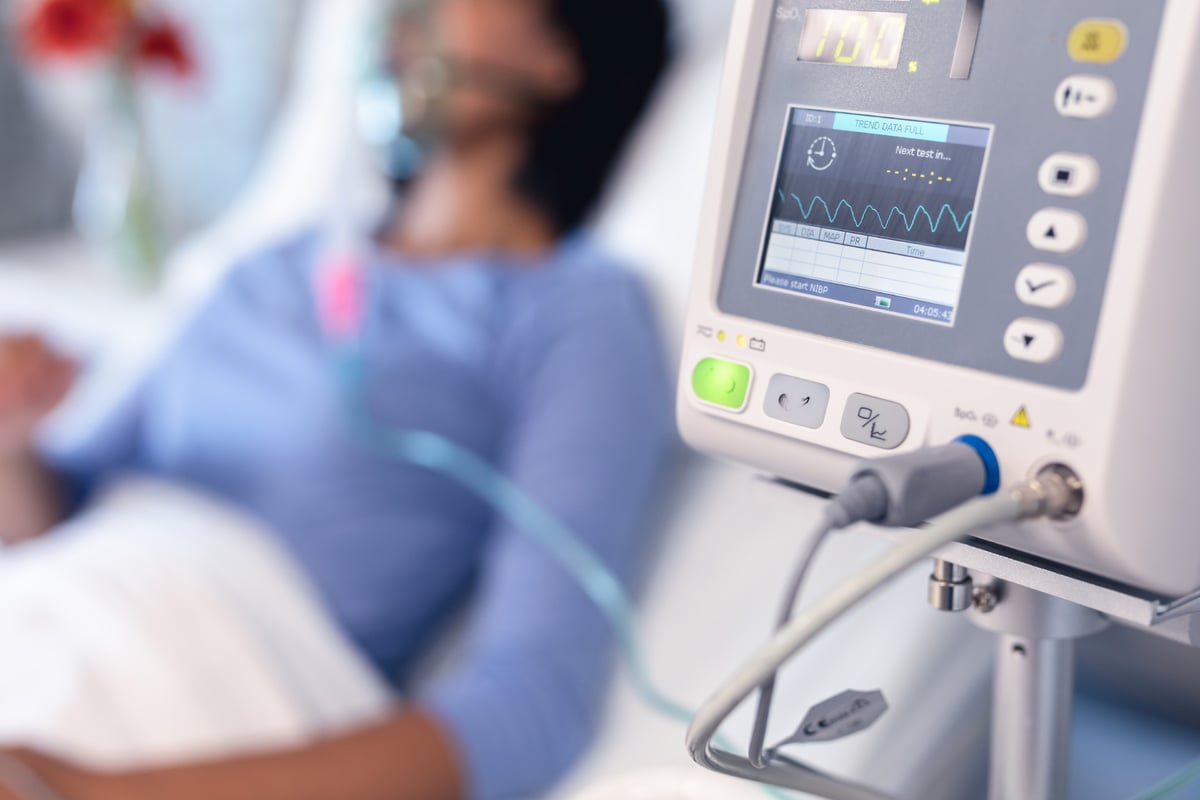
Exploring Oral Hygiene’s Role in Reducing Ventilator-Associated Pneumonia
Ventilator-associated pneumonia (VAP) is a lung infection that develops 48 hours or more after initiating invasive mechanical ventilation. Mechanical ventilation assists breathing in patients who have weak respiration and cannot independently breathe sufficiently to remain alive. Examples of invasive mechanical ventilation techniques include endotracheal intubation and tracheostomy. In endotracheal intubation, a physician places a long endotracheal tube in the patient's trachea (windpipe) through the mouth. In tracheostomy, the trachea is accessed through a small incision on the patient's neck. Tracheal secretion accumulation during intubation is a high risk factor for VAP, which can be caused by lung and lower respiratory tract colonization with microorganisms.
VAP is a common complication that occurs in intensive care unit (ICU) patients and is a high-risk factor for patient mortality. Physicians diagnose VAP using a combination of clinical and imaging findings. Gradual or sudden onset of pulmonary infiltrates may be observed during chest imaging. Clinical VAP symptoms include fever, increased respiratory rate, decreased oxygenation, and purulent sputum. Microbiological assessment of respiratory samples to identify associated pathogens is key in VAP diagnosis, treatment, and management. In patients who received endotracheal intubation, VAP preventive measures include maintaining oral hygiene as well as daily monitoring of the endotracheal tube's cuff pressure, patient head alignment, and subglottic secretion drainage (the focus of a 2022 ECRI webinar).
Oral Hygiene
Daily oral hygiene is a critical care component in patients receiving mechanical ventilation because pathogens that colonize the mouth and throat can serve as a reservoir for potential nosocomial infections. Aspiration of organisms from the oropharynx into the lower respiratory tract in ventilated patients can result in life-threatening VAP.
Daily oral hygiene is needed to minimize biofilm formation and microbial burden in the oropharyngeal tract in order to prevent aspiration of microorganisms into the lower respiratory tract and subsequent VAP. Oral care strategies include mechanical plaque removal and the use of antimicrobial products. Biofilm can be removed through manual or electric toothbrushes. CHG has commonly been used to decontaminate the oral cavity in mechanically ventilated patients. Other antimicrobial agents include PI, hydrogen peroxide, and consumer-grade mouthwashes.
Clinical Research
In a recent evidence assessment on “Oral Hygiene’s Effectiveness for Reducing Ventilator-Associated Pneumonia,” ECRI’s Clinical Evidence researchers identified four systematic reviews (SRs) and three randomized controlled trials (RCTs) suggesting that daily tooth brushing and/or using chlorhexidine gluconate (CHG) may reduce VAP rates in mechanically-ventilated patients.
- A large meta-analysis (Zhao et al.) reported CHG mouth rinse or gel reduced VAP better than placebo or standard care without CHG.
- Another meta-analysis (Fu et al.) reported CHG with tooth brushing resulted in reduced VAP compared with either intervention alone.
- A network meta-analysis of 25 RCTs (Sankaran and Sonis) reported the three best interventions for reducing VAP rates were tooth brushing, tooth brushing with povidone-iodine, and furacillin.
Evidence-based Guidelines
ECRI’s Clinical Evidence researchers also identified two clinical practice guidelines recommending oral health assessments and tooth brushing without CHG for preventing VAP.
- The Society for Healthcare Epidemiology, Infectious Diseases Society of America, and the Association for Professionals in Infection Control and Epidemiology published a 2022 guideline on Strategies to Prevent Ventilator-associated Pneumonia, Ventilator-associated Events, and Nonventilator Hospital-acquired Pneumonia in Acute-care Hospitals stating:
-
- “Provide daily oral care with toothbrushing but without chlorhexidine: (a) Daily toothbrushing is associated with significantly lower VAP rates, shorter duration of mechanical ventilation, and shorter ICU length of stay; (b) Meta-analyses of randomized trials and observational studies allow for the possibility that oral care with chlorhexidine may increase mortality rates.”
- “Consider using selective decontamination of the oropharynx and digestive tract to decrease microbial burden in ICUs with low prevalence of antibiotic-resistant organisms. Antimicrobial decontamination is not recommended in countries, regions, or ICUs with high prevalence of antibiotic-resistant organisms.”
- “Consider using endotracheal tubes with subglottic secretion drainage ports to minimize pooling of secretions above the endotracheal cuff in patients likely to require >48–72 hours of intubation.”
- The Registered Nurses Association of Ontario published a 2020 guideline on Oral Health: Supporting Adults Who Require Assistance suggesting:
- “health providers follow a multi-component oral care protocol that includes: an oral health assessment using a standardized approach and/or validated tool appropriate to the person and health setting; an individualized oral care plan; step-by-step instructions for oral care, including tooth and denture brushing; and identification of required oral care tools and supplies.”
Impact
A 2020 review of VAP in adults (Papazian et al.) estimates that between 5 and 40% of patients receiving mechanical ventilation for more than two days develop VAP and that the traceable cost of VAP typically exceeds $40,000 per case.
Browse research based on recent questions submitted by clinician members of ECRI’s Clinical Evidence Assessment service (password required).
Learn more about how ECRI’s Clinical Evidence Assessment service supports clinicians by researching best practices and evidence-based strategies for improving care quality and patient outcomes.
